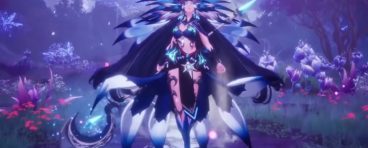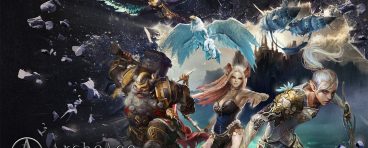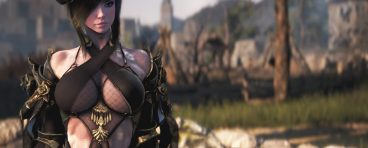Evolution of an MMO Episode 1: WildStar
Opinions on WildStar are largely divided. On the one hand, we have players – fans as they like to refer to themselves as, claiming the game was the best thing since chocolate. Then we have the other players, who were just too casual to never really give it a chance.
And you know what both types of players have in common? Neither category of player played the actual game, contributing to the closure of the title.
Yup, today, we’re delving into WildStar in the very first episode of “the Evolution of an MMO!” If you enjoy the content, consider subscribing! That way you can stay up to date with all of this, help the channel grow, and never miss a video! Plus you get a cookie. And everyone loves cookies.
WildStar had the potential to be an incredible MMO. It had an engaging story, a beautifully crafted world, an amusing sense of humor that really didn’t take itself very seriously, fun PvP, intuitive dungeons and raids, fantastic combat and didn’t cater to the casual gamer at the time.
By any logical train of thought, this should’ve been a huge success, right?
The history of WildStar is a little foggy. On record, WildStar began development all the way back in 2005, after 17 developers decided they’d garnered enough experience working at Blizzard Entertainment, and now wanted to channel their creative juices into something that they had more control over, resulting in the founding of Carbine Studios.
They went on to state – and I quote here – they desired to “do anything but WoW.” They general consensus was that the team was happy to no longer be working on the MMO, instead, being able to start over from scratch. This time, not falling victim to the mistakes they made when they were actively developing WoW.
While evidently they made countless mistakes with WildStar, it is never a bad idea to attempt to branch out and reinvent yourself or your creative ideas.
Now it’s worth noting that several “developers” that worked on the game have come forward and made public statements concerning when the game had began the development process, leading us to believe that it had a much longer cycle than we would have otherwise thought.
But you have to take claims like that with a grain of salt, really, as there’s no evidence corroborating their statements.
The first of many issues
After forming Carbine Studios, they ran into the first small hiccup: Game engine. While they had a vision for their game, a clear direction they wanted to take it, bringing that vision to life would be troublesome without the correct game engine.
There were multiple options available to develop their game on, but Carbine revealed none of them really provided them not only the freedom they required, but also the option of scaling in the future if and where necessary.
After contemplating the options at their disposal, it was concluded that nothing on the market would allow them to create what they envisioned. It was with this in mind that they opted to create their very own engine from the ground up, providing them all the freedom they needed in the long-term.
Acquisition by NCSoft
Development continued to move forward between 2005 and 2007, with 2 years passing since Carbine’s developers had left Blizzard, when it was revealed by NCSoft in 2007 that not only had the South Korean company acquired the new studio, but they were also in the process of developing a new, at the time unannounced MMO project.
Time continued to pass on by, with the game undergoing various overhauls until NCSoft decided to officially reveal a version of the game they had come up with at Gamescom 2011.
They confirmed that the new MMO would be utilizing a subscription-based business model much like World of Warcraft, requiring players not only purchase the base game, but pay a monthly fee to continue playing.
And while players could pay for their subscription via normal means, there was an alternate method in place that some of you might find familiar. If you’re an active WoW player, or have played WoW at all in the last several years then you’ll recognize the WoW Token.
This is an item you can purchase from the cash shop that provides you 30 days in-game play time. These are sellable in-game, allowing for players to purchase a subscription with in-game gold. This has kept many players playing WoW for years without paying a cent.
WildStar did something similar in the form of C.R.E.D.D, providing players the option of purchasing the item and selling it in-game, which consequently left the economy and its future in the hands of the community.
This was at a time when the free to play MMO market was still quite strong, and had millions of players actively split between various different titles. At that point in the genres history, a subscription model all but assured a high quality, successful game. Boy were they in for a surprise.
Two weeks after their reveal at Gamescom 2011, NCSoft previewed the game with an extensive selection of footage at PAX Prime 2011. Hype for the game was continuing to build up after every reveal, with videos for the game averaging in the millions of views.
According to, once again, “developers” that worked on the game, the entire development process up until this point was quite troublesome. A lot of conflicting opinions, views and an uncertain direction for the game were at the top of the list of complaints received.
Yet even with all of these glaringly obvious issues, NCSoft continued to push Carbine to continue developing the game – which by that point wasn’t even the same game they had conceived at the inception of the company.
This sounds eerily similar to how NCSoft treats ArenaNet and Guild Wars 2 in all honesty, which may be a hint at the games future. Maybe that’s just me, though.
Launch in 2014
Regardless, Carbine continued to develop the game according to the direction they were given, with the game releasing officially within North America on June 3rd, 2014.
Reception for the game was… mixed. On the one hand, review websites like IGN were claiming the game was almost worthy of a 9/10, with other websites following along more or less, and while the initial reception was definitely fairly positive, players quickly learned that the game had more issues than what was present from a surface-level impression.
The game was very poorly optimized. This should have been evident to anyone playing the game for any period of time. But that was just the beginning. Every MMO launches with some bugs. That’s to be expected.
It doesn’t matter if you had 10 beta tests leading up to the release of the game, it’s impossible to replicate the data you’ll be able to collect when a game goes live without allowing for that same number of players to be present during a beta.
So we have an atrocious number of bugs hindering player progress, we have some very poor optimization. But that wasn’t it. Not only were those issues frustrating for players, it took much longer to remedy than players were willing to accept.
Coupled with what many players thought was a very sub-par leveling experience, players felt bored, frustrated, and quit.
In an attempt to alleviate some of the stress on their servers, Carbine opened up a surplus of new servers, which fragmented the community, doing more harm than good, as servers emptied rather quickly, leaving the remnants of the game a desolate space.
By the time the servers stabilized, much of the community had left. This was due to the issues that ran rampant over the course of the games launch – some of which were never addressed. This was due to an uninspired leveling experience.
And most importantly, this was due to the game catering to “hardcore gamers,” as opposed to the “casual community.”
WildStar didn’t provide players much in the way of content. Yes, there were traditional PvP modes present just like in the majority of MMOs with PvP functionality, but for PvE players.. You could raid. That was it. You’d log in each week to.. raid.
And the raids required a certain level of skill to participate in. This game was not tuned for casual players, instead, you needed a deep understanding of the mechanical nature of each and every boss, every mechanic. Your class. How it related to the boss and your group.
They catered to a hardcore audience in a world that had become much more casual. Even World of Warcraft had become much more casual-friendly by that point. For context, the base-level of WildStar raids’ difficulty was the equivalent of Savage Raids in Final Fantasy XIV or Heroic Raids in World of Warcraft.
The endgame was a massive time sink that players just did not want to devote time to. And by that logic, if you weren’t interested in hardcore raiding… aside from player housing, there really wasn’t a place for you within the game.
Free to play a year later
A mere year later, on May 28th, 2015, NCSOft announced that the game was going to be going completely free-to-play. This was entirely due to the fact that the games population had ceased all together.
There was nobody left playing the game at this point, and NCSoft, in an attempt to save the game, opted to overhaul aspects of it and transition to a free business model.
This provided a much needed boost to player activity, with hundreds of thousands of players that had never played the game finally being able to sign up, download and log in.
For the first month, the game was booming. There were players everywhere, but that was short lived, as many of the issues that plagued the game back during its initial launch were still present.
Shortly after going free-to-play in February 2016, NCSoft had announced their intentions to close down all of their PvP servers due to them being under-populated, merging them into the remaining two PvE servers. This consolidated the remaining players together until the game was no longer profitable and was subsequently shut down.
Carbine and WildStar closure
After a mere 4 years online, NCSoft announced during a staff meeting on September 6th, 2018, that not only would they be shutting down the entire WildStar project, but also Carbine Studios, who, at the time, had propositioned NCSoft with 2 other projects, both of which were rejected.
At this point, NCSoft saw no logical reason to A.) keep WildStar going as they were losing money keeping the 2 servers online, even though the game was in maintenance mode, and B.) keep Carbine Studios as a subsidiary, as they had had no success in the 11 years they had been actively working for NCSoft.
WildStar officially went offline on November 28th, 2018 and the remnants of the playerbase were distraught, with thousands of players reminiscing over how great the game was. To date, players continue to discuss how much of a masterpiece WildStar was.
You can find evidence of this by merely Googling around online. The reality of it, however, is that Carbine had very grandiose ambitions for the game. NCSoft, after acquiring Carbine, had their own vision for the game.
The conflicting opinions caused quite a few issues over the games development cycle, leading to no clear direction for the game overall.
This, coupled with the combination of poop – yes, I said poop – optimization, the issues plaguing the game, the catering to a hardcore audience by having too large a skill ceiling and a leveling experience that took too long, and was generally uninspired lead to the downfall of not only Carbine Studios as a company, but the stifling of the game and its potential.
WildStar had a fantastic setting. It is honestly a shame to see where it ultimately ended up, but at the end of the day, when you have too many chefs in the kitchen, and none of them can fix the dishes before them laying there as nothing more than a burned mass of.. ideas and promises, this is what you get.
This could have been an amazing MMORPG. But instead, it launched as a premium title, transitioned over to a free title a year later, and shut down 2 years after that.
And that’s WildStar. This admittedly did not have nearly as long of a history as I had originally anticipated, but that wraps up Episode 1 of “the Evolution of an MMO.”













I started playing Wild Star on launch, loved the game instantly. The reason I dropped the game was customer service.
I leveled and bought CREDD to keep my sub going, and, at the end of the first month, my account was hacked. I played during saturday, and when I was back on monday, I found my character naked in the middle of nowhere, all itens and gold gone.
When I was openning my ticket for support service, my account was banned for botting.
After a lot of e-mails with the customer support team, they told me they concluded that my account was hacked and them used for botting, so they would return my account to me.
They took 28 days to return my account, and when I logged in, it was still naked.
They took 7 more days to give a few gold and some green itens, not my original gear set.
In the end, during the beginning phase of the game, I lost more than a month a playing time because the accounts were not seccure and the customer service slow. So, i just left, never came back.